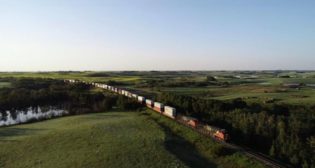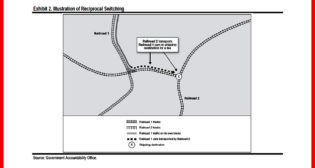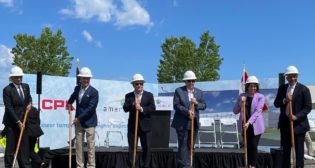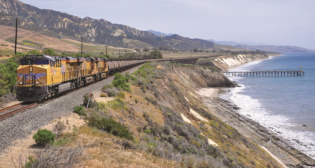
FRA: $1.4B in Infrastructure Funding Through CRISI Program
Written by Carolina Worrell, Senior Editor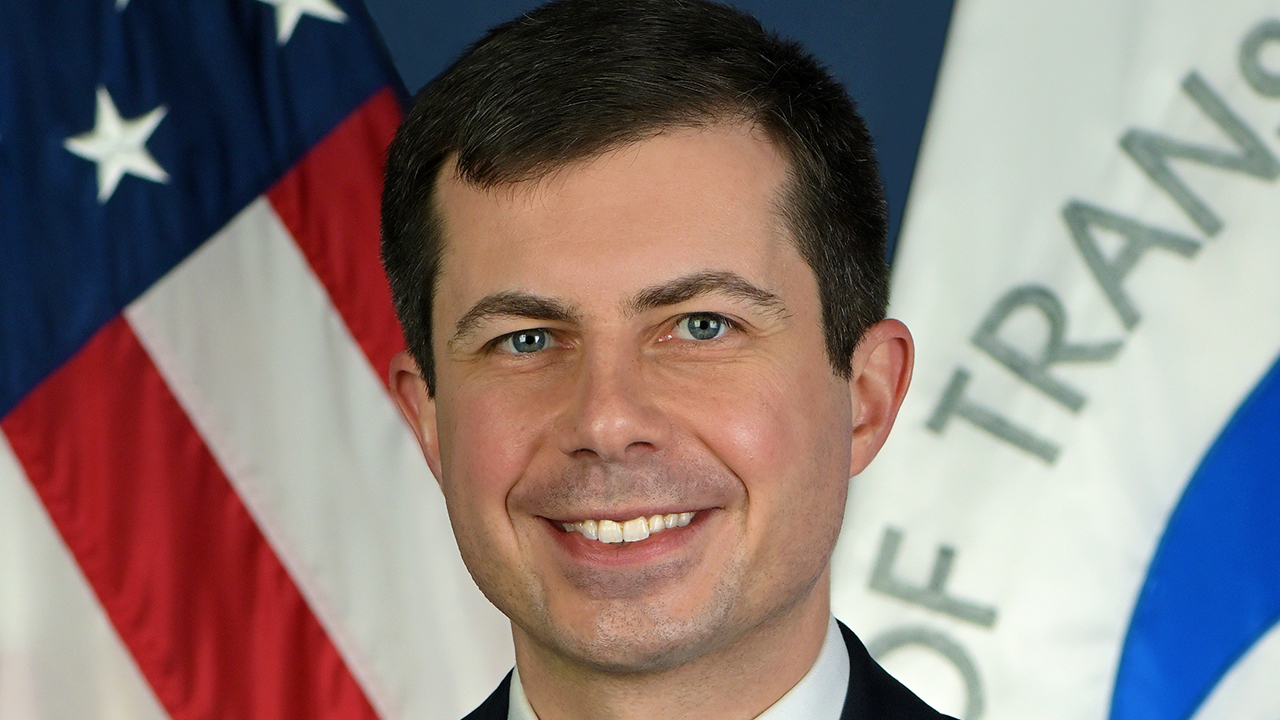
“We’re proud to support construction technology that helps communities build transit projects more quickly,” said U.S. Transportation Secretary Pete Buttigieg.
The Federal Railroad Administration (FRA) of the U.S. Department of Transportation (USDOT) announced Sept. 25 that it has invested more than $1.4 billion from President Biden’s Infrastructure Law into 70 rail improvement projects in 25 states and Washington, D.C.
According to FRA, this is the largest amount ever awarded for rail safety and rail supply chain upgrades through the Consolidated Rail Infrastructure and Safety Improvements (CRISI) program.
As part of President Biden’s Investing in America agenda, federal investments are “tackling long-standing rail needs by supporting communities nationwide to help get people and goods where they need to be safely, quickly, and conveniently,” according to FRA. Projects selected through the CRISI program, which is four times larger since President Biden signed the Bipartisan Infrastructure Law, support community safety through track improvements, bridge rehabilitations, fewer highway-rail grade crossings, upgrades on routes carrying hazardous materials, and more. Selected projects also improve connectivity, reduce shipping costs, increase resiliency to extreme weather, reduce emissions, and support workforce development.
Projects will benefit every region of the country, with nearly two-thirds of CRISI funding flowing to rural communities.
- In Alabama, Louisiana, and Mississippi, more than $178.4 million in federal funding is going to Amtrak, in partnership with the Southern Rail Commission, for the Gulf Coast Corridor Improvement Project, which will restore passenger service in a region that has not had access to it since Hurricane Katrina in 2005. Investments will make several track and signal-related improvements, grade crossing upgrades, and station improvements to add two new daily round trips between New Orleans and Mobile, Alabama. While expanding passenger service, the project will also help maintain reliable freight operations along a line used by CSX Transportation and Norfolk Southern Railway and benefit the Port of Mobile.
- In eastern Washington State, more than $72.8 million will make several track-related improvements, upgrade grade crossings, and enhance infrastructure on the Palouse River & Coulee City Railroad (PCC) through the Rural Rail Rehabilitation Phase II Project. The project is part of a multi-phase effort to improve the PCC, which is vital to the wheat supply chain. Investments will allow the line to carry modern 286,000-pound railcars, increase speeds, and protect against the effects of severe storms and washouts.
- In Tennessee, the Tennessee Short Line Railroads Bridge Bundle Project will put more than $23.7 million to work upgrading approximately 42 bridges along 10 different short line railroads in need of immediate, extensive repair or replacement. The impacted bridges are located throughout the state, and their upgrades will strengthen the short line rail network and improve operational efficiency.
- In Kentucky, more than $29.5 million in federal funding will make improvements along Paducah and Louisville Railway’s 280-mile main line, including upgrading multiple bridges, rehabilitating locomotives, and improving track in a local rail yard through the Foster Economic Sustainability Throughout Kentucky Project. This project will help reduce delays and increase safety and resiliency on a vital freight rail line that contributes to economic activity across 18 rural cities and urban clusters.
- In Nebraska, more than $15.2 million will modernize the Cornhusker Railroad, improving track, grade crossings, and a railcar repair facility through the Cornhusker Railroad Regional Connectivity Project. Investments will result in safer and more efficient operations, including improved interchanging of regional trains with Class I railroads.
- In Maryland, more than $11.5 million will bring the first-ever zero-exhaust emissions locomotives to an east coast port through the Port of Baltimore Strategic Acquisition of Battery Electric Locomotives Project. In total, three older, higher-emission locomotives will be replaced with new battery electric locomotives and a battery charger at the Port of Baltimore, benefiting shippers, port employees, and nearby communities by decreasing air emissions and noise. CSX Transportation will use the battery electric locomotives in its Curtis Bay Piers terminal.
- In Ohio, more than $16.2 million in federal investments will rehabilitate bridges and make several track-related improvements along approximately 180 miles of the Kanawha River Railroad (KNWA) through the North Central Appalachia Rail Enhancement and Rail Corridor Preservation Project. The project will allow for increased speeds while improving safety, reliability, and capacity on a rail line that moves needed goods, including chemicals and hazardous materials, in rural areas of West Virginia and Ohio.
While the majority of selected projects support freight rail safety and supply chains, CRISI investments, FRA says, are also helping to expand world-class passenger rail to more communities nationwide. Investments in Virginia will result in two new Amtrak round trips and three new commuter rail round trips on the RF&P corridor between Washington, D.C., and Richmond—a critical link between Northeast and Southeast states—while also improving the fluidity of CSX’s freight network. In California, two additional daily round trips will be added to the Capitol Corridor between the cities of Sacramento and Roseville, and a project eliminating grade crossings in the Central Valley will bring high-speed rail one step closer to becoming a reality.
“Under President Biden’s leadership, we are making historic investments in rail, which means fewer accidents and delays, faster travel times, and lower shipping costs for the American people,” said USDOT Secretary Pete Buttigieg. “These projects will make American rail safer, more reliable, and more resilient, delivering tangible benefits to dozens of communities where railroads are located, and strengthening supply chains for the entire country.”
“For years, the CRISI Program has helped to maintain and modernize America’s freight rail network, and it’s the only federal grant program prioritizing smaller, short line railroads vital to our nation’s economy and regional supply chains. With unprecedented levels of funding through President Biden’s Bipartisan Infrastructure Law, FRA is advancing even more projects and laying the groundwork for further transformation,” said FRA Administrator Amit Bose. “The selected projects will tackle issues facing communities and invest in a 21st century rail network yielding greater benefits—faster and more reliable deliveries of goods, safer communities, cleaner transportation, and more jobs and workforce development opportunities.”
“Thanks to this funding from the Bipartisan Infrastructure Law, our State of Washington wheat will reach local and international markets faster,” said U.S. Senator Maria Cantwell of Washington. “The legislation nearly tripled funding for freight rail infrastructure, allowing the Palouse River & Coulee City Railroad to make this upgrade that will allow trains to safely travel twice as fast on sections of the 297-mile route. The railroad is a critical part of the Washington Grain Train program, which serves over 2,500 farmers and moves tons of grain to ships at deep-water ports destined for overseas markets.”
The full list of Fiscal Year 2022 CRISI project selections is available to download below.
ASLRRA Responds
“These awards make possible transformational improvements to short line rail infrastructure, pouring hundreds of millions of dollars into safety improvements, emissions-reducing technology, and track and bridge rehabilitation to enhance network resiliency, capacity, fluidity, and service to shippers,” said American Short Line and Regional Railroad Association (ASLRRA) President Chuck Baker in a statement congratulating the recipients of the FY22 CRISI grant awards and celebrating the “unprecedented number of short line railroad proposals for funding.”
Forty-seven of the seventy projects selected by the FRA were put forward by short line railroads or their partners and are designed to invest in short line infrastructure to help these railroads better serve their customers and communities. This round of grant funding is the most successful ever for the short line industry.
“We are ecstatic to note that roughly half of the total available funding, or approximately $720 million, was awarded to small business freight rail projects. Congress has signaled with growing bi-partisan vigor over the years, particularly through the Infrastructure Investment and Jobs Act (IIJA) and the annual
Congressional appropriations process, its support of short lines and our contribution to the economy and the freight rail network in nearly every state across America. In this round, the Administration, U.S. Department of USDOT, and the FRA have done a fantastic job of implementing Congressional intent, resulting in two-thirds of the awards and half of the funding being invested in short line projects,” said Baker. “FRA’s wise selections make clear that short line applicants and their partners provided fiercely competitive proposals that delivered on the USDOT’s stated goals of providing infrastructure investment to improve safety, efficiency, economic vitality, and resiliency.”
According to ASLRRA, short line freight railroads are the first- and last-mile service connections for thousands of industrial, manufacturing, energy, and agricultural shippers across America—particularly in small towns and rural communities. Without modern, safe, and efficient short line rail service, these shippers would risk being cut off from the national freight rail network and global economy—and they would be dependent solely on more expensive, less environmentally friendly transportation. The CRISI grant program, ASLRRA says, makes possible transformational improvements to short line rail infrastructure that will address the number one cause of short line derailments (worn-out track and ties), rehabilitate and upgrade the capacity of older bridges, improve safety at crossings where rail intersects with pedestrians and motor vehicles, prevent trespassing, deploy rail safety technology, and reduce emissions from locomotives.
“Congress and the FRA should be confident that the projects funded will produce benefits far beyond the track itself in the form of safer short line operations, improved rail service, greater supply chain fluidity and efficiency, reduced environmental impact, and the support of hundreds of thousands of jobs across the country that are tied directly to these railroads and to the shippers and communities they serve,” said Baker.
Among many benefits, this year’s CRISI for short line project awards will address safety:
- 13 projects included grade crossing safety and trespassing mitigation elements.
- 14 projects will invest $300 million to upgrade track to move industry-standard railcars weighting up to 286,000 pounds, improving fluidity and creating efficiency benefits for shippers.
- 20 projects involve upgrading or repairing bridges and decrease the environmental impact of freight rail.
- 6 short line projects will upgrade or purchase 24 locomotives at the Tier 3, Tier 4 or zero emission levels.
According to ASLRRA, multiple projects will allow for track speed increases and invest in resiliency to mitigate future extreme weather impacts on the interconnected U.S. freight rail system. “The improvements to short line rail capacity, reliability, and resiliency will improve overall transportation safety, reduce highway congestion, and lower highway wear and tear paid for by American taxpayers by keeping tens of thousands of trucks off the road. Thirty-four of the short line awards will specifically benefit rural areas, where short lines frequently provide the only realistic transportation option for shippers,” ASLRRA said.
“The CRISI program is ‘the people’s program’ for the short line rail industry. It is the only federal grant for which short lines are directly eligible, it invests enough in individual short line projects to truly move the dial, and generally requires realistic matching for small businesses,” said Baker. “There are many to thank for this historic day—Congress for funding CRISI through the bipartisan infrastructure bill and the annual appropriations process, the FRA for the tireless work to select the applications and the upcoming work to advance the projects to completion, the many State DOT and local governments who partnered with short lines to present compelling and comprehensive applications, and the thousands of shippers that trust their business to short lines every day.”
A combined Notice of Funding Opportunity (NOFO) for the Fiscal Year 2023 and at least partial 2024 CRISI grant funding is expected to be released within the next few months.
“Although $720 million is a meaningful dent in the industry-wide short line state of good repair backlog, there are many more short line projects that will be put forward for this next round of funding. We will continue to work with Congress to share the ongoing success of this popular program and ensure that FY24 CRISI funding is as robust as possible,” said Baker. “There isn’t a better bet to be made with scarce public funding than investing in short line projects that improve safety, add value to rail shippers, and enhance the interconnected freight rail industry. Short line CRISI awards are the best bang for the public buck around, and there is more where that came from!”
